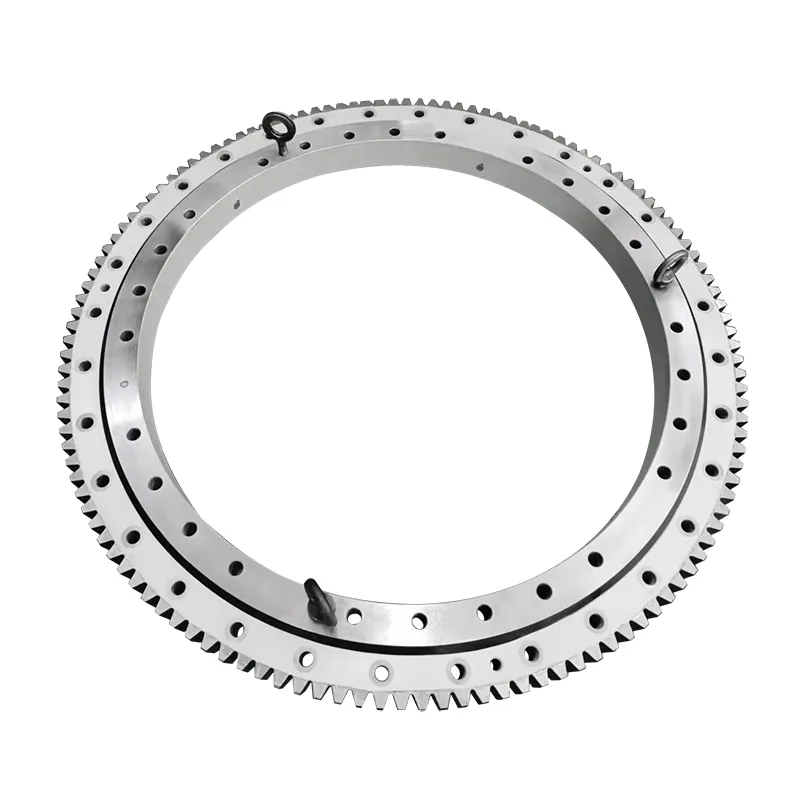Slewing bearings are also called turntable bearings. The main structure includes: inner ring, outer ring, rolling element and rolling element guided cage. It is an important transmission component in mechanical equipment. It is widely used in engineering machinery, light industrial machinery, metallurgical machinery, medical machinery, ship equipment and other industries. Today, the slewing bearing manufacturer will take you to understand the manufacturing process and detailed steps of the slewing bearing.
Slewing bearing manufacturing process

1. Cutting of slewing bearing steel raw materials
The commonly used raw materials for slewing bearings are integrally hardened carbon chromium bearing steel, and the slewing bearing rings are made of surface hardened steel, generally made of 50Mn steel. The cylindrical raw material billets transported back from the steel plant are cut according to the size required for processing the bearings. Generally, carbide saw blades should be used for cutting bearing steel, which has a series of excellent properties such as high hardness, wear resistance, good strength and toughness, heat resistance, and corrosion resistance.
2. Forging of slewing bearing billets
In the heating furnace, the billets are heated and forged into a round cake shape. The forging link is an important link to ensure the reliability and life of the bearing. After forging, the raw materials form the bearing ring blank. At the same time, the organizational structure of the raw materials becomes more dense and streamlined, which can improve the reliability and service life of the bearing. In addition, the quality of the forging process will directly affect the utilization rate of the raw materials, thereby affecting the production cost.
3. Forging ring of slewing bearing
The steel blank is forged into a ring-shaped steel ring by using a ring rolling machine. Forging can improve the internal organization of steel and improve the strength, plasticity, impact toughness and other mechanical properties of steel.
4. Rough turning
The steel ring after ringing is loaded into the machine tool for rough turning of machining, and various grooves and raceways are turned out. The steel ring is fixed on the gear milling machine and the teeth are cut out. The main purpose is to make the ring after the ring is the same as the shape of the final product, creating conditions for the later grinding machine processing.
5. Quenching (heat treatment) of slewing bearing
After machining, the strength and hardness of the steel are improved through quenching operation, and the wear resistance, fatigue strength and toughness of the metal are improved. The heat treatment process is to treat the bearing rings after forging and turning at high temperature. It directly affects the uniformity of carburization in the bearing rings, can improve the wear resistance and hardness of the bearings, and is also an important link that affects the reliability and life of the bearings.
…
For more information about the manufacturing process and detailed steps of the slewing bearing, please click here: https://www.mcslewingbearings.com/en/a/news/slewing-bearing-manufacturing-process.html


